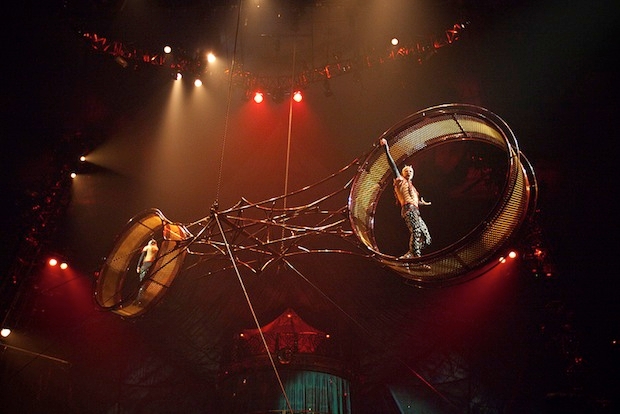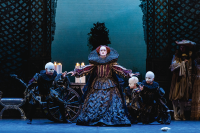I was watching the Cirque du Soleil’s Kooza at the Royal Albert Hall last week, thinking how much base, uncomplicated enjoyment can be had away from dance. Such relief to watch contortionists, trapezists, high-wire cyclists and crazed men skipping on the Wheel of Death, such relief just to be amazed. If they didn’t make my palms pour sweat with fear, my jaw drop with disbelief, I’d feel dreadfully let down.
I wonder what happened to being amazed in dance. I was talking with a friend last week about the lack of amazement offered by the bulk of ballerinas in current productions of the 19th-century warhorses Don Quixote (Royal Ballet) and Swan Lake (English National Ballet). You beg to be dazzled at the climaxes when Kitri and Odile smack into their 32 fouettés, like fireworks exploding. I feel less than excited by current Royal ballerinas, and the depleted ranks of Kitris have had to be reinforced with Russian-trained guest ballerinas from elsewhere; but at ENB I felt properly intoxicated when Tamara Rojo unleashed her renowned fouettés as the seductive, evil Odile.
This self-starting ballerina from Spain, who seems to have invented herself from nothing but her own remarkable will and comprehensive understanding of her art, remains so astonishing as she hits that climax, her leg so high and lethal, the foot so pointed as it swirls her around like a rotor. And she creates with her technical mastery such a sonic boom as this episode leaves art behind and becomes some awesome kind of trick, that it seems to be almost resented by followers of other less rigorously skilled ballerinas. Is it art? Is it circus? You’ll find disapproving commentators out there who prefer a dancer merely to deal with balances or spins. Not me.
Diaghilev invariably demanded for the Ballets Russes, ‘Astonish me.’ To wit, ‘Astonish the audience, please.’ Astonishment used to be a staple of British theatre in Victorian and Edwardian times. London’s venues were worlds indulging insanely ambitious imagination, of circuses and apocalyptic spectacles where you left disbelief at the box office. George Sanger’s Grand Circus fielded 160 horses and 11 elephants, enacting enormous battle scenes on stages around the country. Sadler’s Wells was longtime a famous Aquatic Theatre, staging The Siege of Gibraltar in 1804 with 117 miniature ships actually firing guns, filling its giant tank from Islington’s New River. Imagine!
Graceful Gertrella, the aerial athlete, was nightly in the 1890s to be found hooking up her trapeze in the ceilings of variety theatres, flying on one-handed handstands over the heads of the spectators (without safety wires), even more scary than the awesome bravado (with wire) of Kooza’s trapezist Yulia Korosteleva. And in St Petersburg brilliant Italian super-ballerinas like Virginia Zucchi and Pierina Legnani were being fêted for their phenomenal new skills, dramatic and athletic, which the audience instantly wanted to see their local girls do too, and so had to be taken pronto into the syllabus.
I do love virtuosity. I feel the visceral drama when a superb specialist shows skills for their own sake, but I’m regularly asking myself what it is that separates the dull stunt from the befuddling magic trick. Virtuosity is part of the sensuality of experiencing dance or listening to music. Just as there’s no point in a soprano attempting Lucia di Lammermoor without a top E flat or a pianist braving Tchaikovsky’s First Piano Concerto when they can’t sprint in double octaves, so there’s no point in ballerinas attempting Russian classics like Don Quixote, Raymonda or Swan Lake without being capable of climactic 19th-century fireworks. Of course, the other side is that they shouldn’t attempt these works without the imaginative artistry either.
Not many ballerinas outside Russia these days are trained to be astonishing. One of my happiest dance memories was watching the Bolshoi’s effervescent Nina Ananiashvili in Raymonda at the Coliseum one night whipping off 32 fouettés like a cadenza, raising her arms higher and higher as she revolved so you could swear she was levitating in an ecstatic whirl. You never saw a bride so radiant as this excitedly, excitingly spinning girl. We all felt it, we were on that sky-high trapeze of happiness with her. She and Rojo know how aristocratic the art of astonishment really is.








Comments